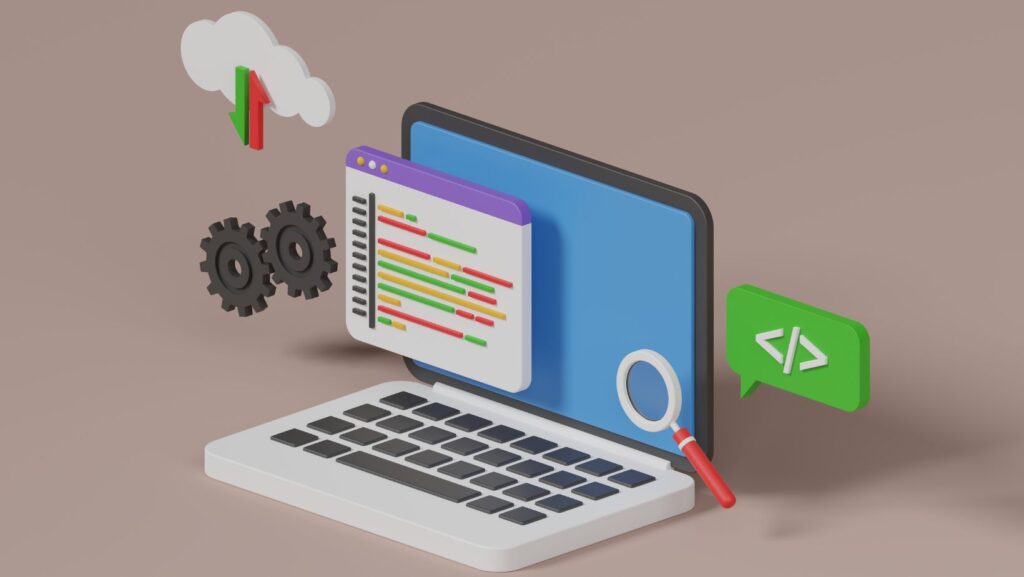In the dynamic world of web development, the right tools can make all the difference. They can streamline workflow, enhance productivity, and ultimately, bring your creative vision to life. But with a myriad of options available, how do you pick the ones that’ll truly propel your projects forward?
This article aims to demystify the landscape of website development tools, shedding light on the top picks that have won the favor of developers worldwide.
Website Development Tools
Structured in a variety of categories, website development tools offer utility for numerous aspects of website creation. These categories can assist in quickly identifying the optimal tools to facilitate efficient and impactful website design.
Categories of Website Development Tools
 Text Editors and Integrated Development Environments (IDEs)
Text Editors and Integrated Development Environments (IDEs)
For writing and editing code, text editors, and IDEs provide a convenient platform. The best examples include Sublime Text, Atom, and Visual Studio Code, which deliver features such as syntax highlighting, built-in version control, and plugin support.
Front-end Frameworks and Libraries
Front-end frameworks and libraries, such as Angular, React, and Vue.js, make the process of creating user interfaces more efficient. They offer pre-written code for common elements, minimizing repetitive tasks and bolstering UI consistency.
Version Control Systems
For maintaining different versions of source code files, website developers rely on version control systems. Tools in this category include Git, Mercurial and SVN – systems that track modifications, facilitate team collaboration, and protect against accidental file loss.
Testing Tools
Quality control in website development hinges on testing tools. Products like Jasmine, Mocha, and Jest facilitate unit testing of individual components, while Selenium provides robust end-to-end testing capabilities.
Build Tools and Task Runners
Build tools and task runners, such as Webpack, Gulp, and Grunt, automate routine tasks like code minification, compilation, and unit testing. They help streamline development workflows and increase productivity.
Deployment and Continuous Integration Tools
Tools like Jenkins, Travis CI, and CircleCI are employed for automating build, test, and deployment processes. This continous integration promotes code consistency, detects errors earlier, and enhances the overall efficiency of the development cycle.
Development and Debugging Tools
Chrome DevTools, Firefox Developer Tools, and LightHouse are prime examples of tools used for debugging and improving the overall development process. These tools allow web developers to dissect their code, detect potential errors, and significantly shape their website’s performance.
Although the sheer range of tools can seem overwhelming, a clear understanding of these categories can guide website developers in choosing tools that best meet their goals. As the landscape of website development evolves, the toolset used by developers continues to grow, further refining the process of website creation.
Key Features to Look for in Website Development Tools
Efficiency and Speed
Speed forms a critical factor in website development tools. The quicker a tool functions, the better it serves its purpose. For example, a website design tool that rapidly generates CSS, HTML, and JavaScript codes accelerates a developer’s workflow, resulting in a faster completion of web projects. Efficiency, on the other hand, corresponds to how a tool manages resources. An efficient tool makes judicious use of system resources, reducing the likelihood of slow-downs or crashes. For instance, an adequately scaled text editor optimizes memory usage, preventing drain on the computer’s processing power.
Compatibility and Integration
The concept of compatibility in website development tools pertains to the scope of their use across different operating environments. Developers prefer tools applicable on multiple platforms, browsers, and devices, such as Google’s Chrome DevTools, which supports both Mac and Windows systems. Integration refers to a tool’s potential to be combined with other tools, amplifying its functional abilities. A highly integrative build tool, like Jenkins, allows developers to meld together different development tools into a cohesive development environment.
User-Friendliness
The term user-friendliness applies to website development tools that offer a smooth user experience. This involves a tool’s ease of use, intuitive navigation, and the availability of comprehensive documentation for troubleshooting. For example, Bootstrap, a front-end component library, is well-known for its simplicity, clear documentation, and user-friendly environment, making it a favorite among web developers. Therefore, it’s essential to eye for these features when choosing your ideal website development tools.

